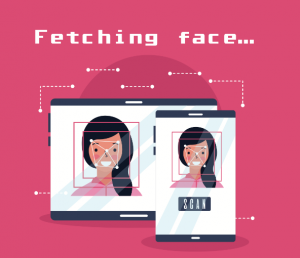Bridging the Gap: How OpenAI’s DALL·E and CLIP are Teaching AI to See the World Like We Do

As an expert in the ever-evolving world of technology, I’m constantly fascinated by the advancements in artificial intelligence (AI). One area that has always intrigued me is the quest to bridge the gap between human understanding and machine learning. How can we teach AI to not just process information, but to truly comprehend it in the way humans do? OpenAI, a leading AI research laboratory, might just have the answer with their groundbreaking models: DALL·E and CLIP.
These innovative models are pushing the boundaries of AI by combining natural language processing (NLP) with image recognition. This powerful fusion allows AI to develop a deeper understanding of everyday concepts, essentially teaching it to “see” the world through a lens of language and imagery.
From Text to Image: A New Era of AI Understanding
OpenAI’s journey began with GPT-3, a language model capable of generating human-like text. While impressive, GPT-3 lacked a crucial element: grounding in the real world. It could string words together beautifully, but its understanding of their meaning remained superficial.
This is where DALL·E and CLIP come in. These models are designed to address this limitation by forging a connection between text and visual information. Let’s delve deeper into each model:
1. CLIP: The Image Whisperer
Imagine an AI that learns to recognize images not from labeled datasets, but from the vast and chaotic world of the internet. That’s CLIP in a nutshell. This model utilizes a novel approach called “contrastive learning” to understand images through their captions.
Here’s how it works:
- Data Ingestion: CLIP is trained on a massive dataset of images and their corresponding captions scraped from the internet.
- Contrastive Learning: Instead of simply memorizing labels, CLIP learns to identify the correct caption for an image from a pool of random captions.
- Semantic Understanding: Through this process, CLIP develops a rich understanding of objects, their names, and the words used to describe them.
This unique training method allows CLIP to generalize its knowledge to new images and concepts it hasn’t encountered before. Think of it as learning the language of images by observing how humans describe them.
2. DALL·E: The AI Artist
While CLIP excels at understanding images, DALL·E takes a different approach: it creates them. This model, named after the surrealist artist Salvador Dali and Pixar’s WALL-E, is capable of generating images from textual descriptions.
Here’s where things get really interesting:
- Text-to-Image Generation: Provide DALL·E with a caption like “an armchair shaped like an avocado,” and it will generate multiple images that attempt to visually represent that concept.
- Conceptual Blending: DALL·E demonstrates a remarkable ability to combine seemingly unrelated concepts, showcasing a nascent form of AI creativity.
- Pushing the Boundaries: Researchers have tested DALL·E with increasingly abstract and whimsical prompts, pushing the boundaries of its imaginative capabilities.
The Power of Synergy: CLIP and DALL·E Working Together
While both models are impressive on their own, their true potential shines when they work in tandem. CLIP acts as a discerning curator, evaluating and ranking the images generated by DALL·E based on their relevance to the given caption.
This collaboration results in a powerful feedback loop:
- DALL·E generates a variety of images based on a text prompt.
- CLIP analyzes these images and selects the ones that best match the description.
- This feedback helps DALL·E refine its understanding of the relationship between language and imagery.

The Future of AI: Grounding Language in Visual Understanding
The development of DALL·E and CLIP marks a significant step towards creating AI that can perceive and understand the world in a way that’s closer to human cognition. By grounding language in visual understanding, these models pave the way for a future where AI can:
- Generate more realistic and contextually relevant images. Imagine AI-powered tools that can create custom visuals for websites, presentations, or even artwork, all based on simple text descriptions.
- Improve communication with AI assistants. Imagine interacting with AI that can not only understand your words but also interpret visual cues and respond accordingly.
- Develop more sophisticated robots and autonomous systems. Imagine robots that can navigate complex environments and interact with objects more effectively by leveraging both visual and linguistic information.

Addressing the Challenges
While DALL·E and CLIP represent exciting progress, it’s important to acknowledge the challenges that lie ahead:
- Bias and Ethical Considerations: Like all AI models trained on large datasets, DALL·E and CLIP are susceptible to inheriting biases present in the data. Addressing these biases and ensuring responsible use will be crucial.
- Trí nhớ và khái quát hóa: Mặc dù ấn tượng, các mô hình này vẫn cho thấy những hạn chế về khả năng khái quát hóa kiến thức và tránh việc chỉ ghi nhớ các mẫu từ dữ liệu đào tạo. Cần nghiên cứu thêm để cải thiện khả năng thực sự hiểu và lý luận về thế giới của chúng.

Conclusion
The journey towards creating truly intelligent machines is ongoing, but OpenAI’s DALL·E and CLIP offer a tantalizing glimpse into a future where AI can comprehend and interact with the world in a way that mirrors our own. As these models continue to evolve, we can expect even more groundbreaking applications that blur the lines between human and machine understanding.
Further Exploration:
- OpenAI’s official blog post on DALL·E and CLIP: https://openai.com/blog/dall-e/
- Research paper on CLIP: https://arxiv.org/abs/2103.00020
- The Turing Test: https://en.wikipedia.org/wiki/Turing_test








